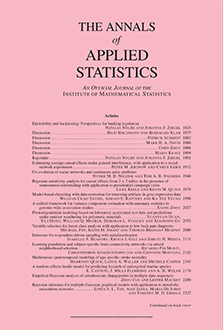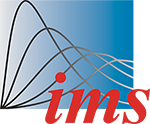Abstract
We propose a new approach for estimating causal effects when the exposure is measured with error and confounding adjustment is performed via a generalized propensity score (GPS). Using validation data, we propose a regression calibration (RC)-based adjustment for a continuous error-prone exposure combined with GPS to adjust for confounding (RC-GPS). The outcome analysis is conducted after transforming the corrected continuous exposure into a categorical exposure. We consider confounding adjustment in the context of GPS subclassification, inverse probability treatment weighting (IPTW) and matching. In simulations with varying degrees of exposure error and confounding bias, RC-GPS eliminates bias from exposure error and confounding compared to standard approaches that rely on the error-prone exposure. We applied RC-GPS to a rich data platform to estimate the causal effect of long-term exposure to fine particles ($\mathrm{PM}_{2.5}$) on mortality in New England for the period from 2000 to 2012. The main study consists of $2202$ zip codes covered by $217{,}660$ $1\mbox{ km}\times 1\mbox{ km}$ grid cells with yearly mortality rates, yearly $\mathrm{PM}_{2.5}$ averages estimated from a spatio-temporal model (error-prone exposure) and several potential confounders. The internal validation study includes a subset of 83 $1\mbox{ km}\times 1\mbox{ km}$ grid cells within 75 zip codes from the main study with error-free yearly $\mathrm{PM}_{2.5}$ exposures obtained from monitor stations. Under assumptions of noninterference and weak unconfoundedness, using matching we found that exposure to moderate levels of $\mathrm{PM}_{2.5}$ ($8<\mathrm{PM}_{2.5}\leq 10\ \mu\mathrm{g}/\mathrm{m}^{3}$) causes a 2.8% (95% CI: 0.6%, 3.6%) increase in all-cause mortality compared to low exposure ($\mathrm{PM}_{2.5}\leq 8\ \mu\mathrm{g}/\mathrm{m}^{3}$).
Citation
Xiao Wu. Danielle Braun. Marianthi-Anna Kioumourtzoglou. Christine Choirat. Qian Di. Francesca Dominici. "Causal inference in the context of an error prone exposure: Air pollution and mortality." Ann. Appl. Stat. 13 (1) 520 - 547, March 2019. https://doi.org/10.1214/18-AOAS1206
Information





